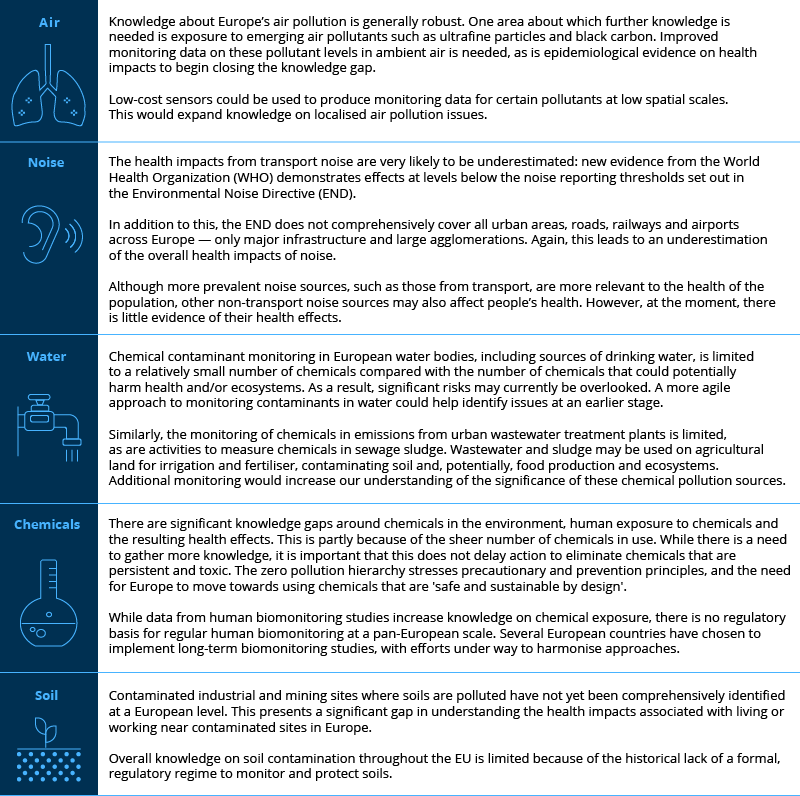Introduction
The EEA zero pollution monitoring assessment is mainly based on formal, EU-wide data sets and indicators. To broaden the assessment, other sources of information are also examined. These sources include findings from research, country-level information and other information that may help highlight pollution issues that are insufficiently addressed by legislative or other reporting. This section of the zero pollution monitoring assessment presents a series of short case studies that highlight some of these additional sources of information. We refer to these as ‘Signals’.
The Signals below align with the subsections of the ‘Zero pollution and health’ section of the assessment and deal with air, noise, water, chemical and soil pollution.
A brief assessment on key knowledge gaps for each of these topic areas is also presented (Figure 1).

Cover image source: © Evangelija Ivanoska, Well with Nature /EEA






Document Actions
Share with others